I use a password manager on my PC and mobile devices. For me, it’s still the best way, and even the only way for now, to juggle all the unique and complex passwords for my online accounts. I would therefore advise anyone with a large number of accounts to adopt a password manager.
But if you don’t yet have a dedicated password manager, and you already use Microsoft Authenticator for two-factor authentication, you can use this same application for password management.
Microsoft Authenticator can indeed generate, store and apply passwords on websites thanks to an autofill function. Besides supporting iOS, iPadOS, and Android devices, the autofill option works in desktop versions of Google Chrome and Microsoft Edge through an extension.
How to use Microsoft Authenticator as a password manager?
1. Open the Microsoft Authenticator app
If you need to download Microsoft Authenticator on your mobile device, download it for iOS, iPadOS, or Android. Open the app and tap the Passwords icon in the bottom toolbar. Tap the button at the bottom to sync with your account.
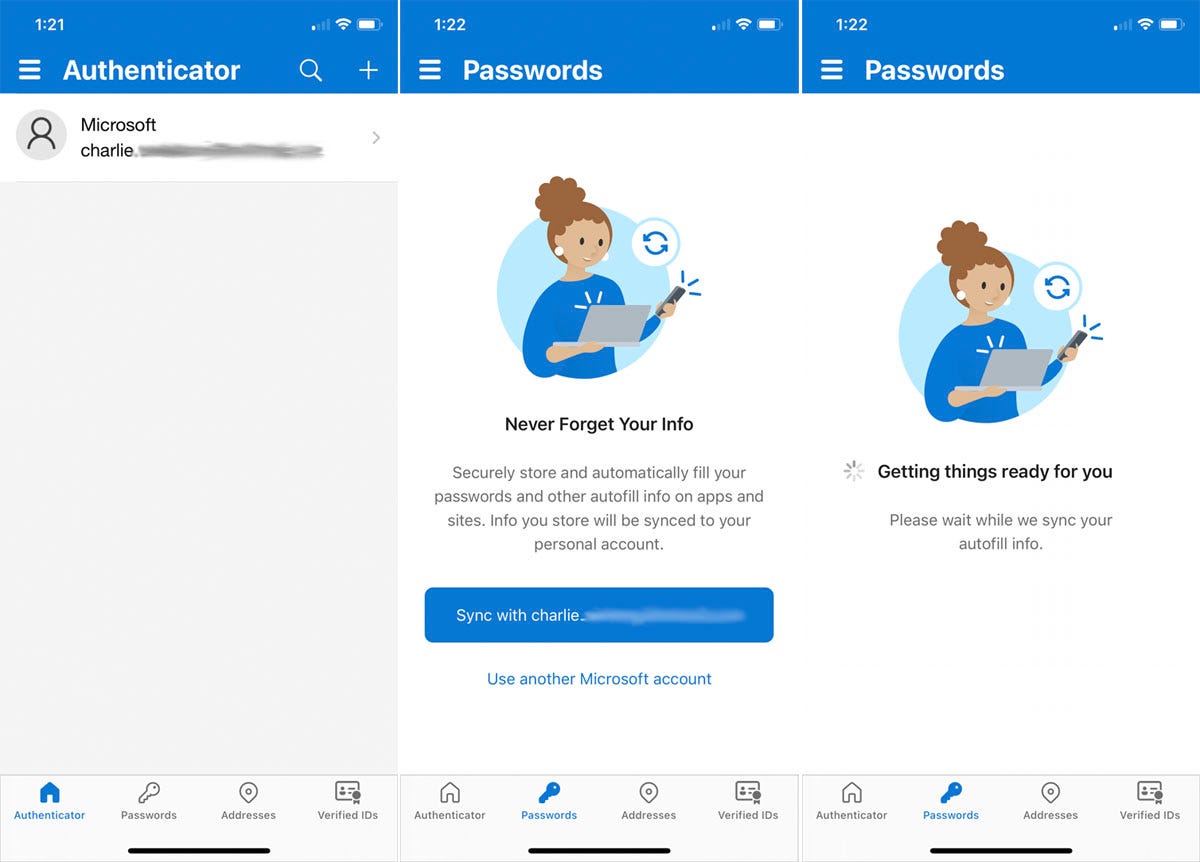
Log in with your account. Screenshot by Lance Whitney/ZDNET
2. Import passwords from Chrome
The next screen prompts you to import your passwords, giving you the option to import them from a password manager or Google Chrome. Let’s try the Chrome option first.
Push the button Import directly from Google Chrome. The following screen explains the steps for exporting your passwords from Chrome. Open Chrome on your mobile device.
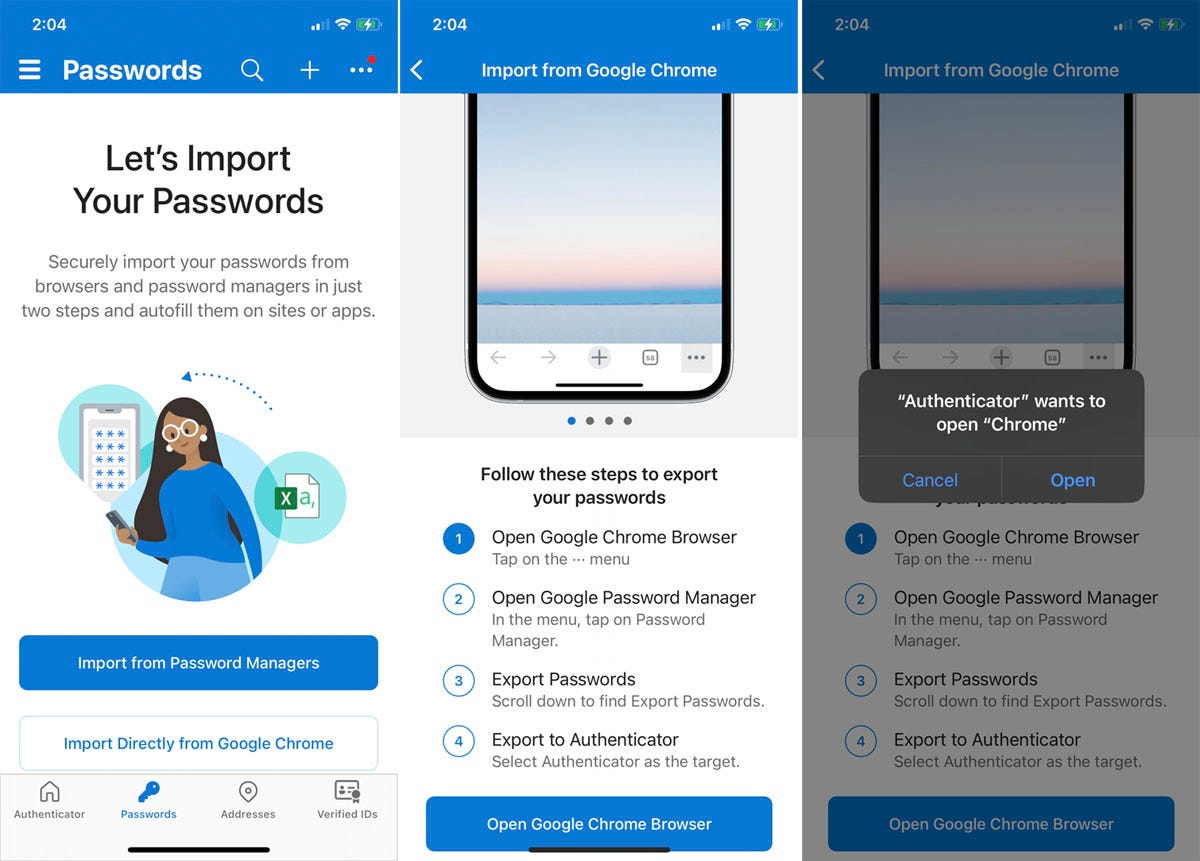
Open Chrome. Screenshot by Lance Whitney/ZDNET
3. Select Password Manager
On an iPhone, tap the three-dot icon at the bottom of the screen and select password manager. Swipe down the screen and touch Export passwords. On an Android device, tap the three-dot icon at the top of the screen, go to Settings, then select password manager. Tap the Settings icon, then tap Export passwords.
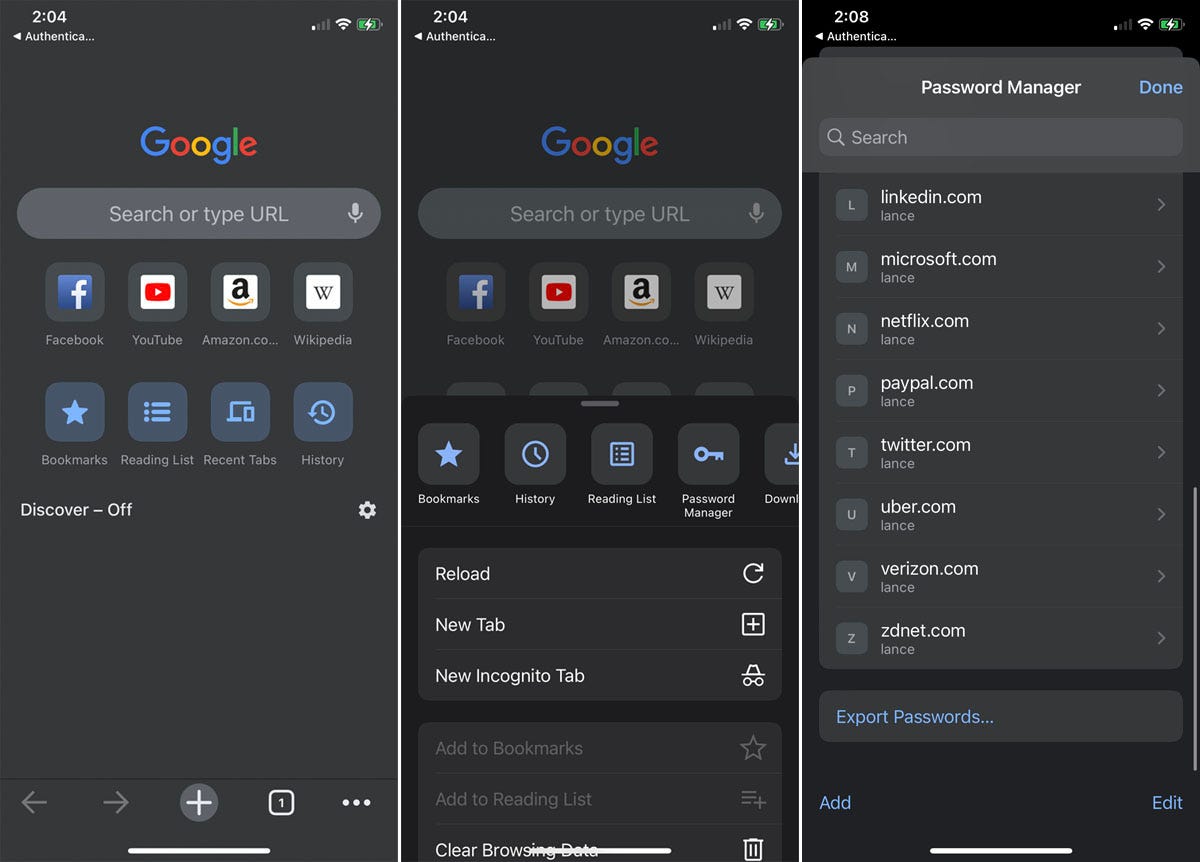
Go to Chrome’s password manager. Screenshot by Lance Whitney/ZDNET
4. Confirm and select Authenticator
Confirm that you want to export your passwords. Tap Authenticator as the app you want to export passwords to. A notification confirms that your passwords have been imported.
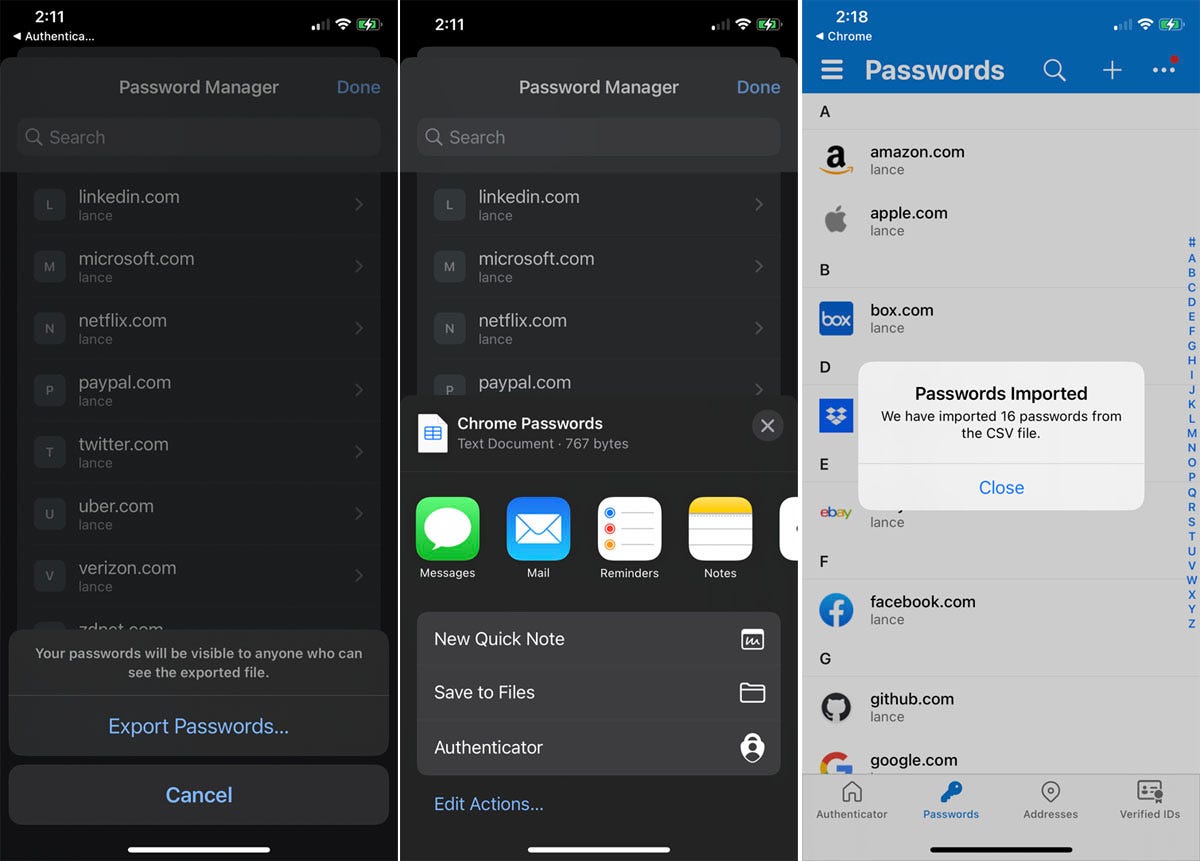
Export passwords from Chrome to Authenticator. Screenshot by Lance Whitney/ZDNET
Import passwords from a password manager
If you’ve ever used a dedicated password manager, such as Apple Keychain, 1Password, Dashlane, Bitwarden, LastPass, or RoboForm, you can add those passwords to Authenticator. To do this, you will need to export the passwords to a CSV file and then import them into Authenticator. In Authenticator, go to Settings and tap on the option Import passwords. Press the button to Import from password managers. On the next screen, choose the password manager you use and follow the steps to export your passwords.
Whether you export the passwords to your mobile device or to your computer, you will need to make the CSV file available on your device, which you can do by copying it to a backup and sharing service, such as OneDrive, Google Drive or iCloud.
In the Microsoft Authenticator app, tap the notice asking if you saved passwords in other apps or go to Settings and select the setting Import from password managers. Choose your password manager. Browse to the location and folder where you saved the CSV file and select it. Your imported passwords will then appear.

Import your passwords from a password manager. Screenshot by Lance Whitney/ZDNET
Manually add a password
Of course, you can also manually add a new account to the app. On the Passwords screen, tap the + sign to add a password. Then enter the URL, username, and password of the website account you want to add. When you’re done, tap Save.
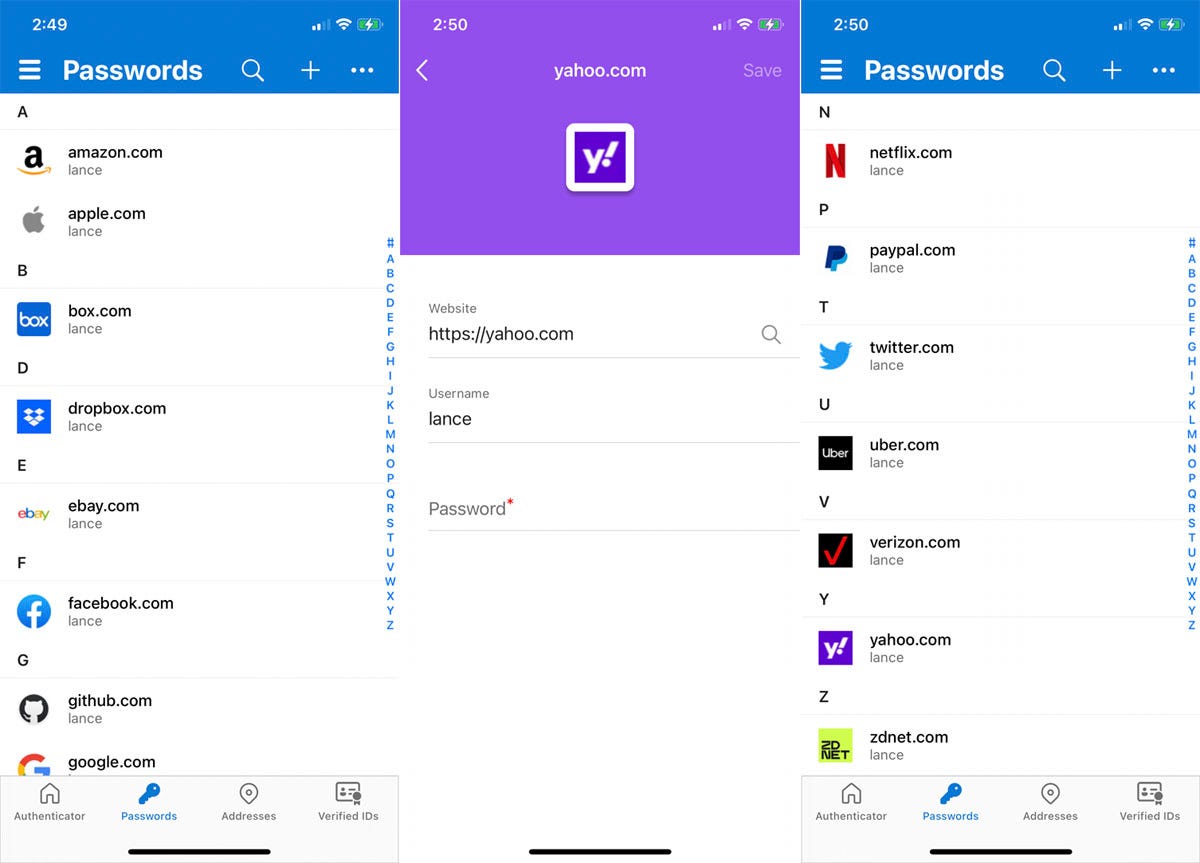
Manually add a password. Screenshot by Lance Whitney/ZDNET
Generate password
Microsoft Authenticator can create a password for a new account or an existing account. In the iPhone app, tap the three-dot icon and select password generator. In the Android version, tap the + icon and select Generate password.
Touch the link Customize password to set password complexity and length, choosing to include or exclude letters, numbers, and special characters. Tap the refresh icon to generate another password. When you are done, press the button Copy Password to paste it elsewhere. Alternatively, tap the floppy disk icon to use the password in a new account you want to add to the app.
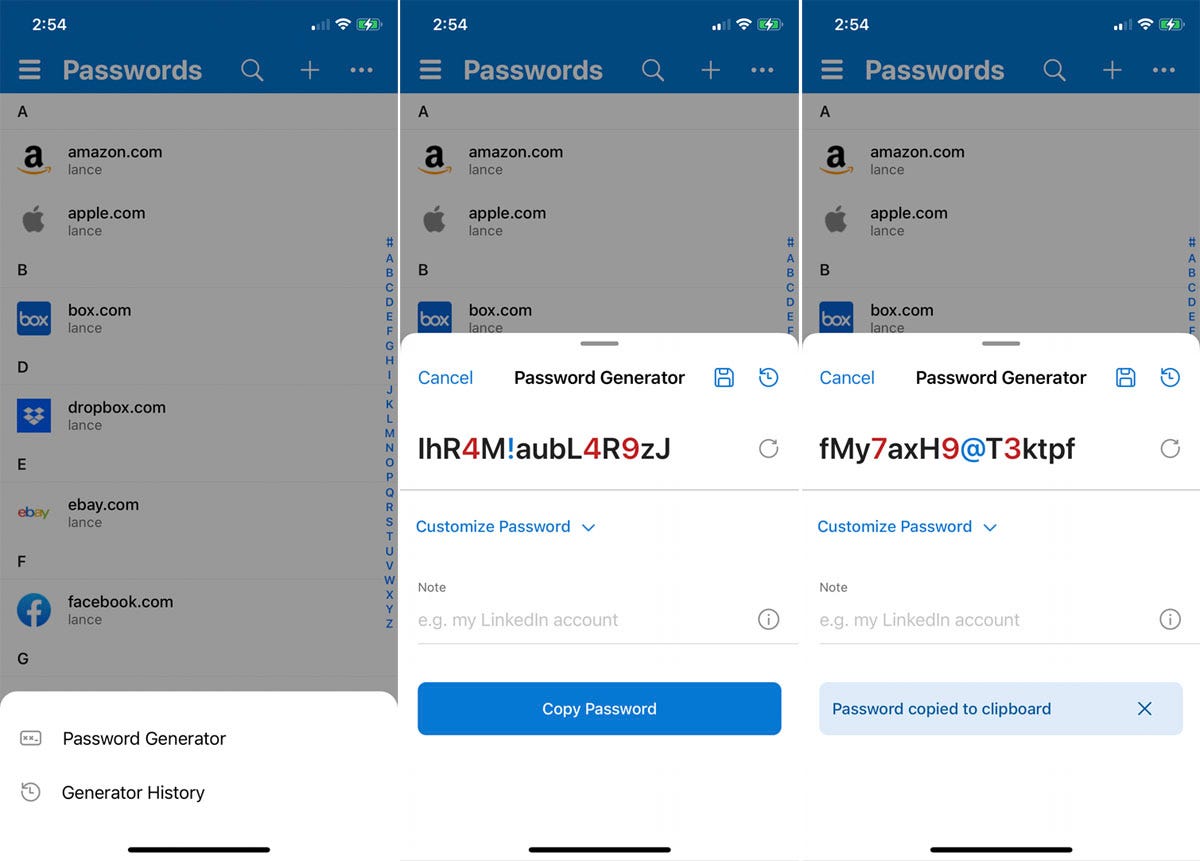
Generate a password. Screenshot by Lance Whitney/ZDNET
Use autofill
The Authenticator app autofills your username and password for registered online accounts. But first you need to enable the feature. On an iPhone, go to Settings > Passwords > Password Options. Enable the Autofill passwords option and select Authenticator to make it the default autofill app. Also uncheck all other apps from the autofill list. On an Android phone, go to Settings in the Authenticator app. Enable options Set as autofill provider And AutoFill on more apps and sites.
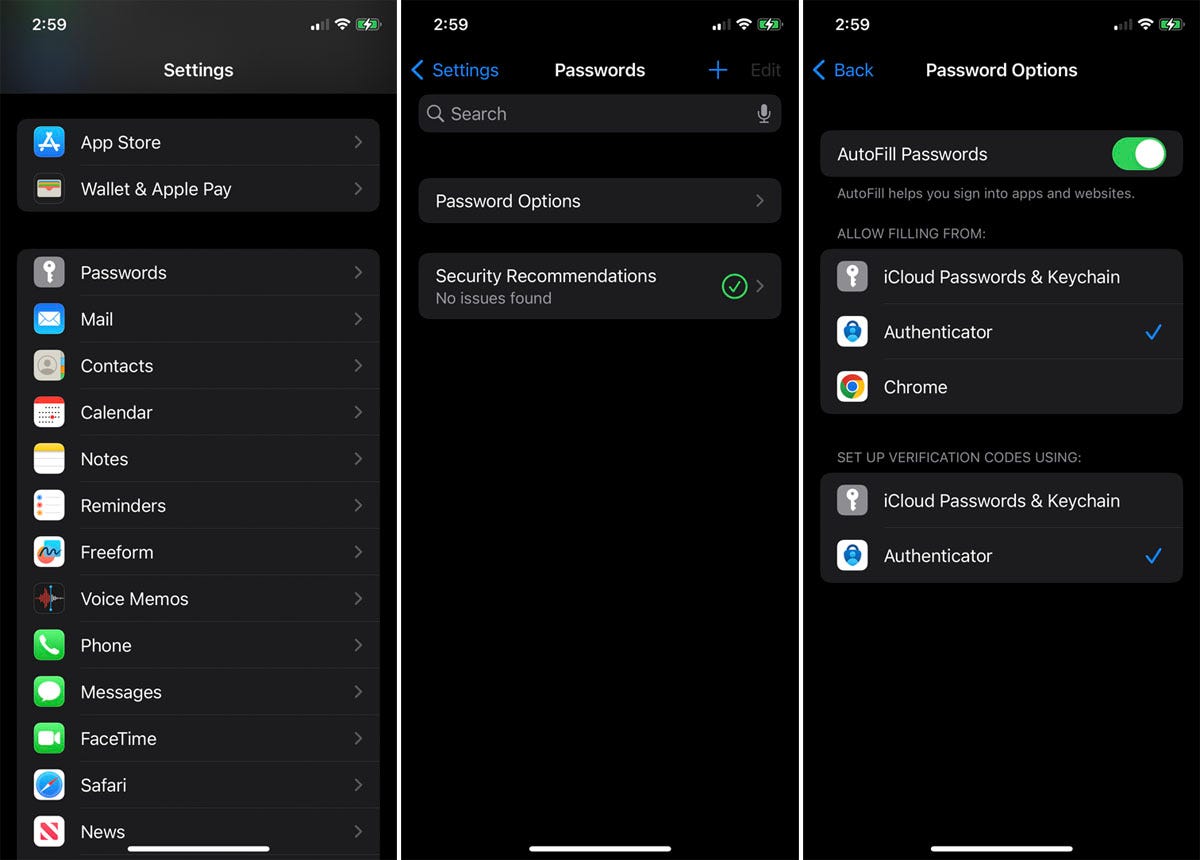
Use Autofill. Screenshot by Lance Whitney/ZDNET
On an iPhone, autofill from third-party apps, like Microsoft Authenticator, only works with Safari. But you can also use it with any application that requires a connection. Open Safari and navigate to one of the websites or open one of the apps where your credentials are stored in the Authenticator app. Tap the username field. In some cases, a button for Authenticator will display your correct name. If so, press this button. Tap the password field, then tap the button for your account name.
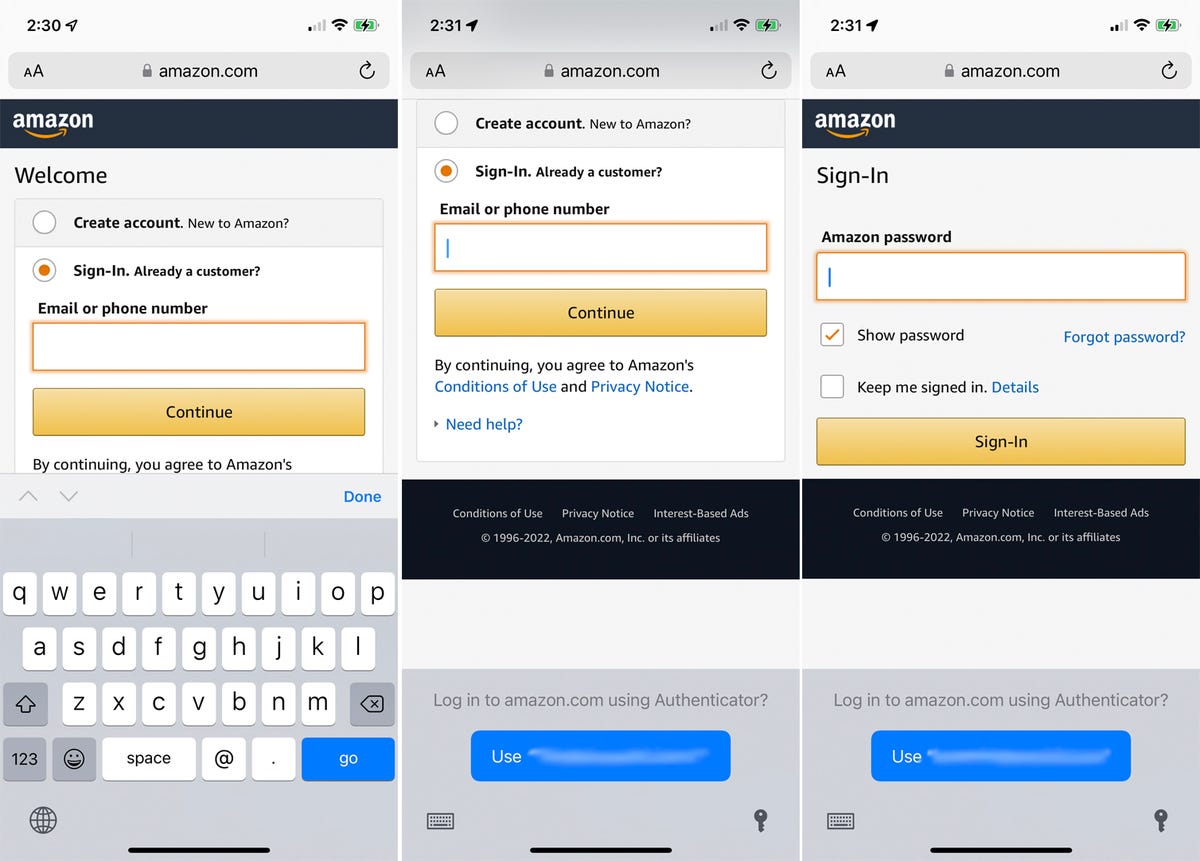
The Amazon login page. Screenshot by Lance Whitney/ZDNET
In other cases, a key icon appears just above the keyboard. Tap this icon and the Authenticator app displays the account. Select your account name in the app.
The user name and password fields are then filled in. Press the Sign in button, and you are logged in to the site or application.
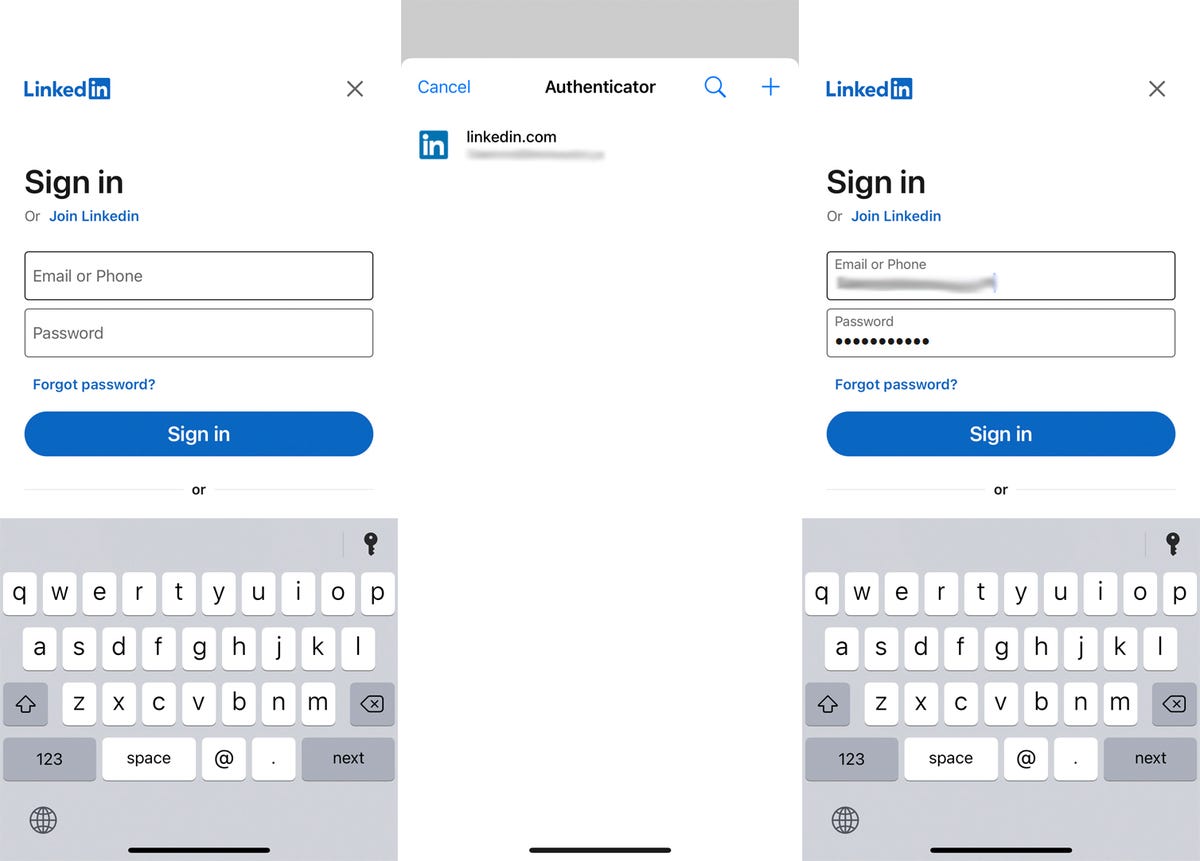
The LinkedIn login page. Screenshot by Lance Whitney/ZDNET
On an Android phone, the autofill process is similar to that of an iPhone. Open your favorite browser or a specific application. Tap the username field and the Authenticator app account name will appear above or below the field. Touch this name. For the password field, the account name appears above the keyboard. Tap that name, then sign in to the Authenticator app. The username and password fields must be filled in, which allows you to log in to the site or application.
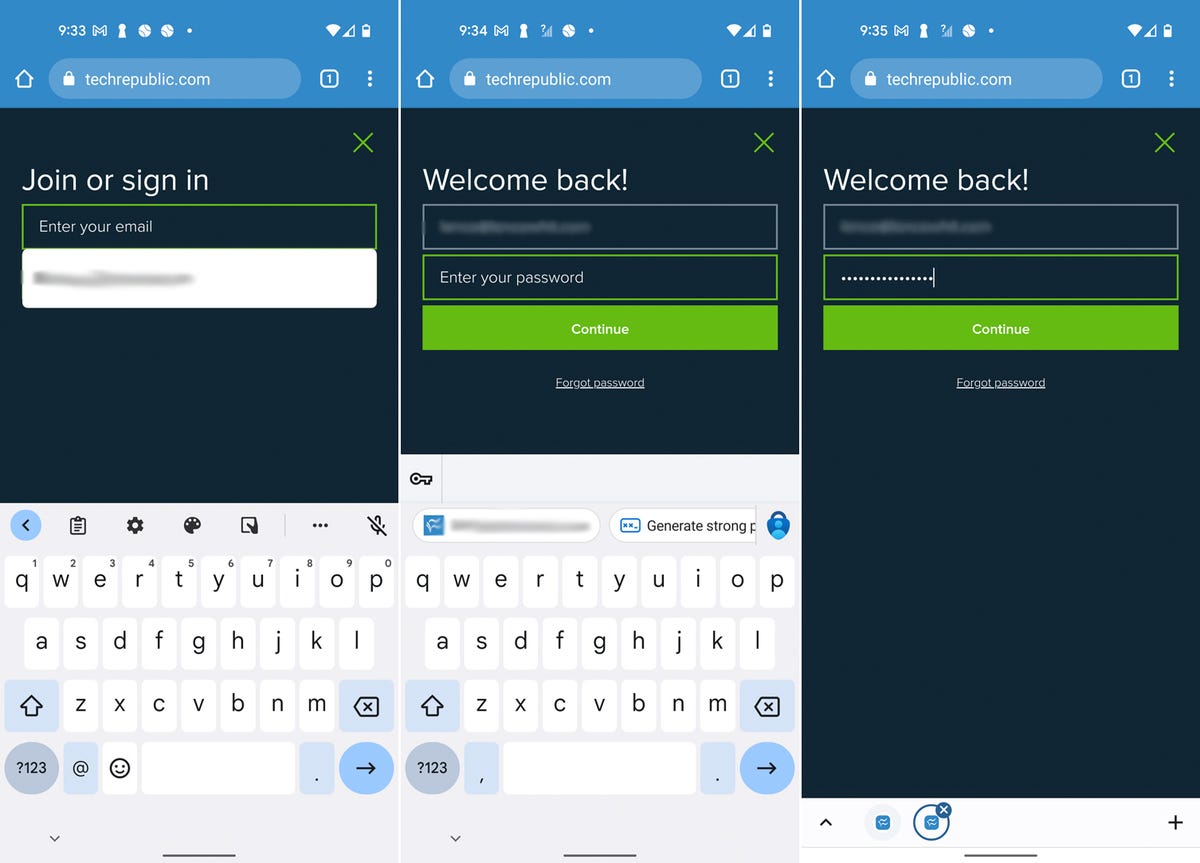
The TechRepublic login page. Screenshot by Lance Whitney/ZDNET
Use Edge and Chrome on the desktop
Finally, you can use Microsoft Authenticator’s autofill feature in desktop versions of Microsoft Edge and Google Chrome through an extension.
In Chrome or Edge, go to the Chrome web store link for Microsoft AutoFill and add the extension to the browser. Go to a site for which the account is registered in Authenticator. Click on the username field and your account name should appear below. Click on the name and Authenticator will connect you to the site.
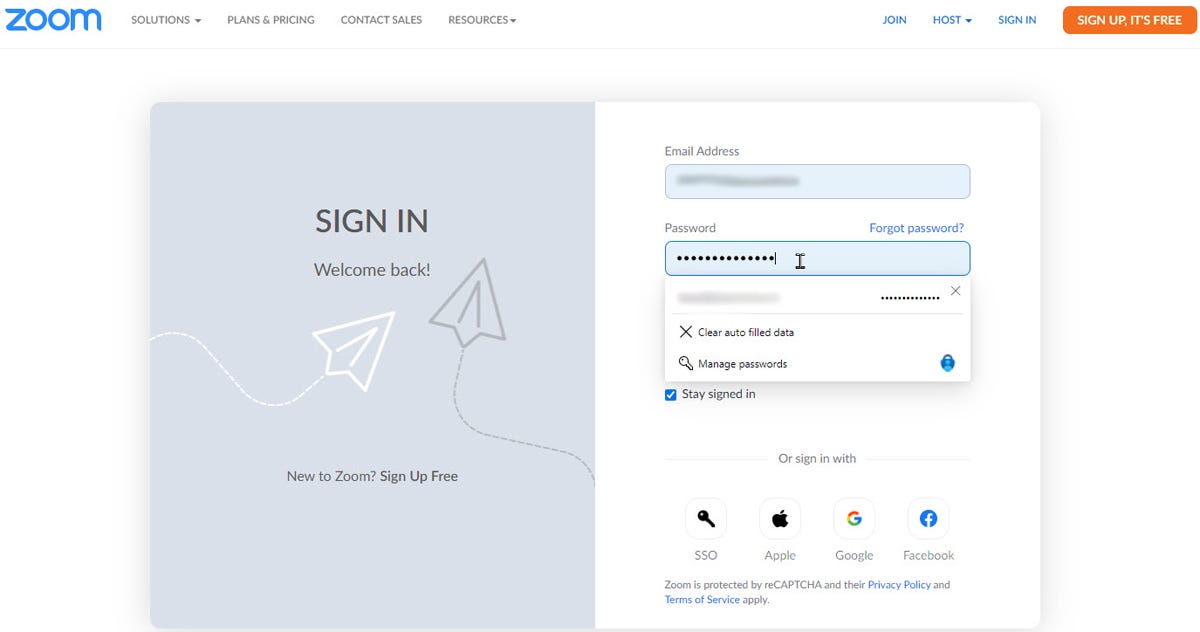
The Zoom login page. Screenshot by Lance Whitney/ZDNET
Source: “ZDNet.com”
